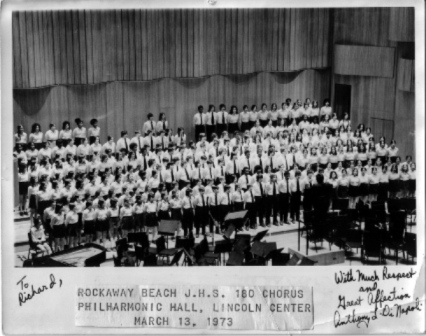main: June 2009 Archives
The Myth of Arts and School Reform, Redux
Richard Kessler's strong June 24 blog entry (Arts Education Should Align with School Reform. Really?) prompts additional thoughts dredged up from my encounters with this issue over the years. I will be brief:
1. Frustrated by lack of sustained recognition and support, the arts education and cultural community turn to advocacy, hoping to scratch their way into the consciousness and conscience of the general public, the policy makers (national, state and local), the money givers (public and private), and occasionally the education community.
2. Arts education advocacy tends to be opportunistic, claim-based persuasion that tries to co-opt research and every latest fad, craze, or buzz that commands public attention. It grabs at slogans that identify new waves or problems, latches on to them, and then asserts, even trumpets, the ability/capacity of the arts to help reach whatever goal that has been identified or solve whatever problem is lamented.
3. The impetus for this behavior is an honest desire to draw attention to the arts and their power to engage and enlighten us. History teaches us that this approach is flawed and needs rethinking. Examples across the last five decades:
a. 1960s: The arts will improve our citizens' quality of life, help us address social and financial inequities, and lead us to the Great Society. (A nice socially alert bubble that the Vietnamese War and the lack of infrastructure quickly defeated)
b. 1970s to today: Artists can change schools and get us back to basics. (Even the schools struggle to change themselves, their philosophies, structure and focus; the arts have a role to play, but are rarely strong enough to lead the process.)
c. 1980's: The arts can reform schools. (If you read the abundant literature on school reform over the decades, it is crystal clear that one wave after another fails because of the lack of full commitment and implementation throughout the school, the lack of infrastructure and financial support, and the inability to sustain alterations in the culture of the school society. The arts, always a minor presence in the majority of schools, haven't the power to move these mountains.)
d. 1990's: The arts can reform teaching and learning.(The arts can influence, help shape and deepen understanding; they can add other desirable qualities to the school environment, and attract attention and often support from the community. Given their scarcity and limited time in school cultures, expectations must be modest and shaped accordingly.)
e. 2000: Standards in the arts can change the course of education nationally and locally. (Well, no, they can't; or at least, they haven't, yet.)
f. 2009: The arts can help us compete in a global economy. (No, neither directly or indirectly) Can we clear our palette? Can we redirect our thinking and claiming to address the arts as education and together figure out how to assure their place in the spectrum of teaching and learning in every school? Slogans don't work. Hard work and collective thinking might.
Jane Remer June 26, 2009
************************************************************************************************************
JANE REMER'S CLIFFNOTES We are at another rocky precipice in our history that threatens the survival of the arts in our social fabric and our school systems. The timing and magnitude of the challenges have prompted me to speak out about some of the most persistent issues in the arts education field during the last forty-plus years. My credo is simple: The arts are a moral imperative. They are fundamental to the cognitive, affective, physical, and intellectual development of all our children and youth. They belong on a par with the 3 R's, science, and social studies in all of our elementary and secondary schools. These schools will grow to treasure good quality instruction that develops curious, informed, resilient young citizens to participate fully in a democratic society that is in constant flux. I have chosen the title Cliff Notes for this forum. It serves as metaphor and double entendre: first, as short takes on long-standing and complicated issues, and second, as a verbal image of the perpetually perilous state of the arts as an essential part of general public education. I plan to focus on possible solutions and hope to stimulate thoughtful dialogue on-line or locally.
************************************************************************************************************
 Jane Remer has worked nationally for over forty years as an author, educator, researcher, foundation director and consultant. She was an Associate Director of the John D. Rockefeller 3rd Fund's Arts in Education Program and has taught at Teachers College, Columbia University and New York University. Ms. Remer works directly in and with the public schools and cultural organizations, spending significant time on curriculum, instruction and collaborative action research with administrators, teachers , students and artists. She directs the Capezio/Ballet Makers Dance Foundation, and her publications include Changing Schools Through the Arts and Beyond Enrichment: Building Arts Partnerships with Schools and Your Community. She is currently writing Beyond Survival: Reflections On The Challenge to the Arts As General Education. A graduate of Oberlin College, she attended Yale Law School and earned a masters in education from Yale Graduate School.
Jane Remer has worked nationally for over forty years as an author, educator, researcher, foundation director and consultant. She was an Associate Director of the John D. Rockefeller 3rd Fund's Arts in Education Program and has taught at Teachers College, Columbia University and New York University. Ms. Remer works directly in and with the public schools and cultural organizations, spending significant time on curriculum, instruction and collaborative action research with administrators, teachers , students and artists. She directs the Capezio/Ballet Makers Dance Foundation, and her publications include Changing Schools Through the Arts and Beyond Enrichment: Building Arts Partnerships with Schools and Your Community. She is currently writing Beyond Survival: Reflections On The Challenge to the Arts As General Education. A graduate of Oberlin College, she attended Yale Law School and earned a masters in education from Yale Graduate School.*************************************************************************************************************
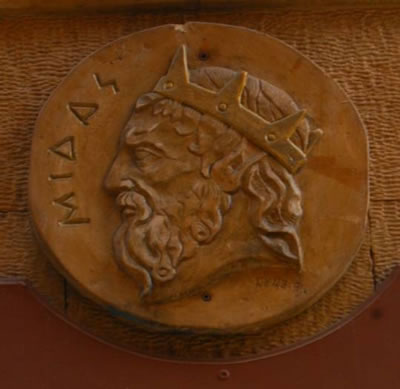
And certainly, it is something that's been bandied about for years. I authored and co-authored a report or two, or three, that asserted this very same notion.
Fifteen years ago, I think it made a lot of sense, although I think the field wasn't ready to take on what the assertion meant at that time, which was really about becoming more closely aligned with teaching and learning in other subject areas, united by the desire to improve public education.
School Reform.
Reform School.
Interesting what happens when transposed?
Think about that for a little while.
Anyhow, today, school reform is basically about injecting market driven forces into a school system, and providing district designed indicators to drive the market. The idea here is that as one big city mayor proclaimed: "show me competition, and I will show you improvement."
Just as competition is purported to improve access and cost of health care, so it goes for public schools.
The market force/lever is the standardized test scores, and to some degree graduation rates. Higher test scores equal a better product, which will be desired by people who are given choice, as the zoned school concept is eradicated. Conversely, lower test scores will produce a worse produce, which will go out of business because people won't choose that product, or the pressure to compete will force improvement. Also, if you get rid of the unionized labor, a real market can drive the teaching and administrative workforce. And of course, the charter schools and vouchers are connected to this as well.
What is more, teachers will receive bonuses based on these tests, which will also be used to determine tenure, if there is tenure, and will be used to determine dismissal/termination of low performing teachers.. Likewise for principals. Ultimately, although this doesn't appear to be in the accountability offerings, school superintendents and others "accountable" for the school system would be fired too, based on performance.
(Interesting is that when faced with this issues back in the 70's and 80's, Al Shanker used to ask how the child would be held accountable?)
But, as we've seen in the corporate world, often the CEO's get rewarded for poor performance. The golden parachute doesn't change its atomic structure upon the company's poor performance.
This entry isn't a debate on the purported merits of taking the free market that gave us sub prime mortgages, an abominable state of health care, etc., and reforming schools through the injection of a free market theory into such schools and their related systems.
Instead, it's an open question as to whether or not the arts education advocates calling for arts education to be part of school reform, as it is defined today, are calling for the right approach, as well as the question of whether or not those making this call know what they're asking us to get into.
Of course, there are and will be arts organizations that create charter schools, just as there were arts organizations that were core partners creating small schools, through Gates and Carnegie Corporation funded small school initiatives. But is that really aligning with school reform today?
School improvement. I can buy that term.
School reform/reform school, I think some questions need to be asked, and asked again.

Click here to go straight to the media player for that segment: Name that Instrument! The State of Arts Education.
It's worth a listen, they had a very good lineup of guests speaking on the issue.
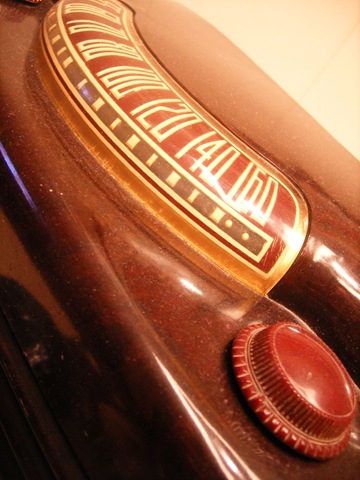
My good friend and colleague Lynne Munson, Executive Director of Common Core, has posted a an entry on her blog that compares the NAEP Arts Assessment 2008 with the NAEP math and reading tests. Lynne, a former deputy director of the National Endowment for the Humanities, and author of Exhibitionism: Art in the Era of Intolerance, concludes that the arts assessment is a far cry from what we all know as the gold standard in reading and math.
It would be fair to say that it's more like the chrome standard.
 Here's an excerpt:
Here's an excerpt:A radio producer called me yesterday and asked what I thought about some of the questions on the test. He thought that some of what the 8th graders were being asked seemed to be a bit abstract, and stated that few adults, even those who appreciated art would not know the answers. He wondered whether or not the tests made any sense.How would you describe NAEP? Here's what comes to mind for me: a rigorous achievement test given regularly to a statistically significant number of students in a large number of schools in every state. That description certainly fits NAEP's reading and math assessments. In 2007 NAEP's reading and math tests each were given to approximately 350,000 4th and 8th graders at more than 14,000 schools.
Now let's look at the NAEP arts assessment. The 2008 test was given to just 7,900 students in 520 schools. Now, for analysis purposes, cut that number in half because the test was actually two tests-one each in music and visual arts-and half the sample took each. So fewer than 4,000 students in 260 schools took each test. That's about 80 kids in five schools in each state. Also, it was given just to 8th graders-no 4th or 12th graders need apply. And, this is only the second time the arts assessment has been given in over 25 years. Reading has been given 13 times during that same period.
NAEP's arts assessment is a different class of test than the NAEP tests we talk about most often. Let's not be confused about the quality of data the arts test represents.
What does NAEP tell us, really? Based upon the sample size of eighth graders, in art it tells us what they know and to some extent are able to do (based upon the performance component). In music, it tells us what an eighth grade student knows about music, but not what they are able to do as there is no performance component. And in writing this, I have great misgivings, as I am not sure if what we are asking of these students on the tests is what we want them to know. That's what the radio producer was asking me, basically.
What a student knows, is clearly in relation to the best that NAEP could do on an age and grade appropriate spectrum. What makes even this difficult, and in particular, places it wildly out of context, is that unlike math and reading, there are eighth grade students who may have had practically no music or arts instruction prior to eighth grade, while at the same time there are students who have been engaged in high quality sequential instruction for years leading up to the eighth grade.
I believe this creates a question of context that does not appear in math and reading. It made me think that perhaps we needed to look at something I would call quality of access. Lots of people would like to think the NAEP results really say something about teacher quality, or quality of instruction, and to some degree that true. However, the quality of access may be a more important factor, for without the sustained access which creates a continuum of instruction that is relatively common among all eighth grade students, the NAEP tests are somewhat meaningless.
By the way, you know that dance and theater were not included in either 1997 nor 2008 because the NAEP couldn't find enough programs to create a statistically significant sample size?
I firmly believe that any statement NAEP makes about its assessment indicating that there hasn't been a narrowing of the curriculum to be a terrible misstep, since they really don't have that data on any reliable level. As I mentioned in my first post, they know what administrators report on what is offered. Even if we take that at face value, for the sake of argument, with all of the expanded efforts in the past 11 years totaling to a holding of the line, not very good line as equity and access goes, is in fact, a terribly disappointing measure, one that should cause many in this field to rethink approach.
One or two last thoughts.
NAEP doesn't touch why we believe the arts are special, and to some degree different than other subject areas. It doesn't address things like executive function, attitudes, or for that matter, the magic and beauty of the arts as a form of expression, builder of community, channel to the imagination, and all the other things that distinguish the arts from some of the other subject areas.
I think that this NAEP assessment is a terrific challenge for us to ask for more, to ask for better, to demand that the arts assessment receive the gold standard, not the chrome standard, and to do some of our own research taking this to the next important step.
For example, we are talking with Jennifer Jennings about trying to disentangle some of these long run trends in arts participation and access using the three repeat samples of high school students that we have from the 1980s, 1990s, and 2000s (High School and Beyond, the National Educational Longitudinal Study, and the Educational Longitudinal Study 2002). Each has high school transcript data as well as data about extracurricular participation, so it seems possible to identify long run trends in who participates within schools and how much (not just which schools have access, as NAEP arts did above), and also to see if the super accountability states saw declines in participation for low-performing kids over this period.
That's just one interesting issue out there that represents how you can leapfrog from NAEP.
And, to wrap up for the moment, NAEP appearing at the same time as an NEA report that is rather startling in the declines it shows in arts participation, is quite the cocktail, don't you think? In the very same week. How do ya like them apples?
But let's not forget that the NEA study did not really look at the more popular forms of art. The NAEP test suffers from some of the same issue. I would love to see a study look at the complete picture of arts participation, as well as arts learning...
"My husband and I believe strongly that arts education is essential for building innovative thinkers who will be our nation's leaders of tomorrow."
Michelle Obama
It is interesting to see how this is being reported, particularly from the headline perspective. It's an amazing statement on how this is being reported, which in turn raises great questions as to whether these reporters understand the issues, do any analysis, or simply just print the press release.
It's also interesting to note the lack of comments from authoritative figures. Most of the pieces carry a quote from NAEP officials, and yes, Arne Duncan issued a statement. There are a couple of pieces with a comment from the National Endowment for the Arts.
But where is Diane Ravitch? What about Randi Weingarten? What about some of the big name school superintendents or school board presidents? How about a word on this from Checker Finn?
You've got the positive headlines: "Visual arts, music, stand as core component..." "Proportion of Schools Offering the Arts Stays the Same." "NAEP Finds Schools' Offerings in Arts Holds Steady."
You've got the negative headlines: "Study Finds Instruction in Art Lags in 8th Grade." Which was initially released yesterday as "Mediocre Arts Skills for American Eighth Graders."
You've got the fence sitting headline: "National Arts Test Scores offer Clouded Picture."
You've even got the insider headline: "What does 'P' in music mean? Twenty percent of
 students know." I have to say, with some embarrassment, that when I first read that headline, I found it confusing. Of course I know what p stands for as part of musical notation, hey, I have two music degrees from Juilliard (that's called playing the Juilliard card, which ordinarily doesn't count for much). That being said, my brain couldn't decode the "p" as part of text, out of context.
students know." I have to say, with some embarrassment, that when I first read that headline, I found it confusing. Of course I know what p stands for as part of musical notation, hey, I have two music degrees from Juilliard (that's called playing the Juilliard card, which ordinarily doesn't count for much). That being said, my brain couldn't decode the "p" as part of text, out of context. Here are nine headlines from a Google search this morning:
Nation's Report Card on the Arts for 2008 released
Study Finds Instruction in Art Lags in 8th Grade
National arts test scores offer clouded picture
What does 'p' in music mean? Twenty percent of US students know.
Picture is unclear on arts instruction in schools
Frequency of Arts Instruction Remains Steady Since 1997 on the ...
Proportion of Schools Offering the Arts Stays About the Same
NAEP Finds Schools' Offerings in Arts Hold Steady
On Friday June 15th, the 2008 "Arts Report Card" was released. Before I get into anything else, I do have to say how important it is that NAEP includes the arts. While there will be big and small issues to debate, the effort here is important and hopefully something that can be done again in less than 11 years, while being improved upon greatly.
Here's the link straight to the NAEP website.
Here's a link to the NAEP Commissioner's remarks.
Here's a link to Secretary Duncan's statement on NAEP.
Here's a good Duncan quote:
This Arts Report Card should challenge all of us to make K-12 arts programs more available to America's children and youth. Such programs not only engage students' creativity and academic commitment today, but they uniquely equip them for future success and fulfillment. We can and should do better for America's students.Way to go Mr.Secretary! Let's all keep that statement in mind when it comes to "Race to The Top" funds from the USDOE.
Here is Sam Dillon's piece for the NY Times: Mediocre Arts Skills for American Eighth Graders
A few notes:
1. NAEP looked at music and visual arts at the 8th grade level and includes both public and private schools
2. NAEP did not look at theater or dance.
3. Purely In terms of access, NAEP looked only at what was offered to students sampled, and found that there wasn't much change in the provision of art and music at the 8th grade level.
4. NAEP reports an achievement gap in art and music, tracking to "racial, ethnic, gender, and socio-economic levels."
5. NAEP sampled a total of 7,900 eigth-graders nationwide, assessing half for music and half for visual arts.
So, what to make of all this? I plan to come back with more analysis and commentary. A quick read:
1. It's good thing that this is revealing important issues concerning quality of instruction in art and music.
2. It appears to do a disservice to the equity and access issues by giving the impression the arts are holding their own over the past 11 years. While the access may appear relatively static in the sample, without getting into great details, it's lacking the relevant and necessary context of what's transpired over the past decade. A great deal of work has taken place since 1997 to restore arts education. If you consider that after all that work, that the arts are in the same place on the basis of access, well, that's much, much worse a situation than is indicated in the report. And of course, there's plenty of missing context in terms of what students should be receiving.
And, let's remember that the report relies on what administrators report concerning what is offered to students. This is the Achilles heel of most of these reports. We do not know what the kids are actually receiving. So, for those crowing about how this proves the curriculum hasn't narrowed as a result of NCLB, they better think again.
More to come, as I haven't had a chance to really kick the tires here.
In the meantime, here's a quote to chew on:
"The 2008 arts assessment shows students do not seem to be missing out on opportunities for, and access to, arts education, as many have argued in recent years," saidVote now, choose one:Darvin M. Winick , chairman of the National Assessment Governing Board, which oversees and sets policy for NAEP. "But we do face consistent and wide racial/ethnic, gender, and socioeconomic gaps across the subject areas."
Applause?
or
Cough?
Here in New York City, middle school only 46 percent of middle school students are provided with the minimum arts requirements according to New York State Law. That means that we cannot find the means to provide a total of 108 hours of arts instruction across the middle school grades for each and every student.
Missing out on "opportunities for, and access to, arts education?" Ahem, cough
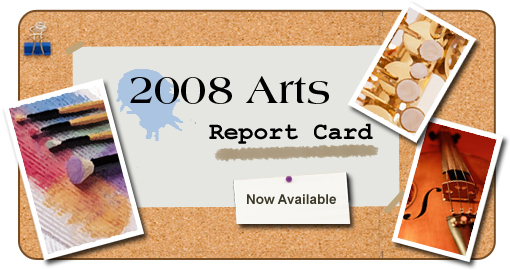
Note the title: City Schools are Seeing Arts Programs Erased Amid Budget Cuts
For those of you who don't know this school district, basically, the principals call the shots. If they want to gut an entire arts program, they have the power, as the have been "empowered," with no practical supervision.
School budget cuts are wiping out entire departments, with art classes and programs for at-risk students disappearing fastest, the Daily News has learned.
Intermediate School 218 in East New York, Brooklyn, is losing one third of its teachers, which will mean axing its music, art and computer programs, teachers said.
"From top to bottom, the school is going to be gutted," said Chris Schilling, the school's computer teacher and basketball coach whose position has been cut, he said.
"There's no paper, no ink in the printers - we can't even make copies," he said.
For the tale of two worlds, compare the Daily News piece, with a NYCDOE press release two days ago:
June 9, 2009 N-88, 2008-09
CHANCELLOR KLEIN ANNOUNCES START OF P.S. ART 2009
Student Artwork on Display at The Metropolitan Museum of Art Now through August 2
Exhibition generously supported by Bank of America and Studio in a School New York City
Schools Chancellor Joel I. Klein today announced the start of P.S. Art 2009, an exhibition of artwork by New York City public school students. Now in its seventh year, and the second year of its installation at The Metropolitan Museum of Art, P.S. Art celebrates the visual arts and showcases the tremendous talent of public school students from across the City. Bank of America has generously underwritten the exhibit with a grant to The Fund for Public Schools, and Studio in a School has graciously supported the production of the exhibit. This year's exhibition includes 58 paintings, prints, sculptures, collages, and drawings created by students ages four through 19. The exhibit will be on display now through August 2, in the Ruth and Harold D. Uris Center for Education at The Metropolitan Museum of Art.
"P.S. Art is a wonderful way for the public to get a glimpse into the outstanding arts education that's happening in our classrooms," Chancellor Klein said. "We are committed to providing every student with an outstanding arts education, and this exhibition showcases the creative and artistic talents of our students. I want to thank The Metropolitan Museum of Art for hosting this inspiring exhibition and Bank of America and Studio in a School for once again supporting this display of student work."
"Art can open doors and create connections for our incredibly diverse public school population," said Caroline Kennedy, Vice-Chair of The Fund for Public Schools. "In a city where more than 150 languages are spoken in the homes of our students, art is a universal language, giving all children an avenue for expression. I would like to congratulate the students whose fine artwork is on display and thank The Metropolitan Museum of Art for making this opportunity possible."
"Today, we are celebrating the work of some of New York City's most extraordinary young artists, displayed on the walls of one of the finest arts institutions in the world," said Kate Levin, Commissioner of the Department of Cultural Affairs. "This project is the result of intense collaboration among cultural organizations, teachers, and parents, who are working together to unlock the creative potential of our students, day-in and day-out, in schools and cultural venues across the five boroughs."
"Bank of America believes encouraging arts education in the public schools is critical to the development of our country's future leaders," said Rena DeSisto, Global Arts and Culture Executive for Bank of America. "Our support of P.S. Art is a natural extension of our company's partnership (More) with The Fund for Public Schools and complements our ongoing support of major New York cultural institutions, including the host of this amazing exhibit, The Metropolitan Museum of Art."
"I congratulate the young artists whose work is displayed in P.S. Art 2009," said Tom Cahill, Studio in a School President and CEO. "Your work is being shared with visitors from around the world, and reminds us of the early beginnings of the great artists whose work is on view at The Met."
Visual art teachers across the City submitted more than 1,000 pieces of student artwork to be considered for the exhibition. Art educators and administrators narrowed the selection to 450 works to be judged by a jury of acclaimed artists, educators and distinguished members of the New York City arts community. The jury selected the 58 works to be included in P.S. Art 2009. These works highlight outstanding artwork from New York City's public school students and the best practices of their teachers as they relate to the Department of Education's Blueprint for Teaching and Learning in the Arts, a curriculum guide which provides educators with a standards-based, rigorous approach to teaching the arts.
###
Contact: David Cantor / Ann Forte (212) 374-5141
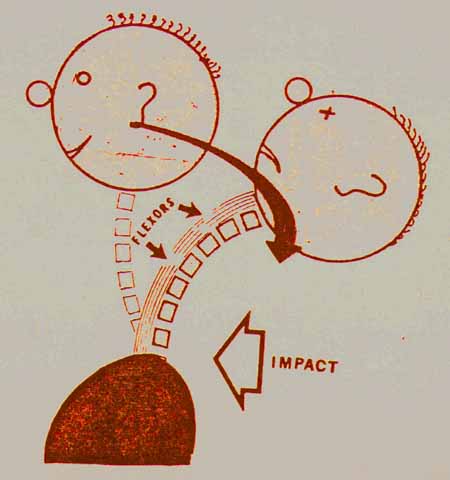
Middle School 223, once shuttered as one of the most violent middle schools in New York City, was reopened in 2003 as M.S. 223/The Laboratory School of Finance and Technology. Today, Principal Ramon Gonzalez says attendance is about 4 percent higher than at any middle school in the area. Meanwhile, test scores have risen from an 8 or 9 percent competency in reading and math to a whopping 65 percent of students on grade level for math and 40 percent for English language arts. And Gonzalez credits a large part of this success to the school's robust arts program.

This excerpt is part of a piece running in this month's edition of Dance Teacher Magazine.
Here is another:
"Dance is a way to get kids involved in the school," he explains. "It immediately affects attendance, and that immediately affects test scores." When the educators at M.S. 223 realized that arts classes were such a draw, they began scheduling them on days when attendance was typically low. This led to a wholesale change in philosophy. "Before, we saw [arts and academics] as mutually exclusive, and now we see things differently," says Gonzalez.In a time where the curriculum is being narrowed, here is one principal doing the exact opposite: he takes away from test prep to schedule the arts.
N.B. Full disclosure, both of the schools in this article are partners with CAE...
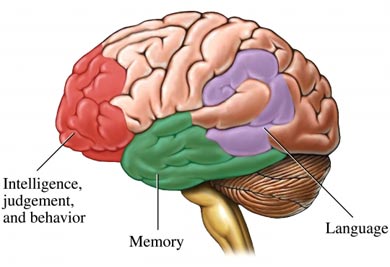
Okay, so last week, juggling family obligations, I had to take a day off from work to watch Sophie. Towards the afternoon, as I was starting to enervate, she asked me if she could paint at her easel. She's got one of these swell plastic easels, with lots of space to store paint, brushes, her smock, paper, etc.
So I move the easel to the kitchen, where I've put down a big plastic sheet; tear off a nice big piece of paper; load the paint colors Sophie requested into her little paint containers; and, off she goes.
I watched. And watched. And watched. It was fascinating.
Sophie was focused, deliberate, and in her own way, an age-appropriate way, masterful. She did two paintings, we let them dry, and she began to think about when we would show them to her Mommy. Also, we spent some time talking about how she would sign the paintings.
"Masterful," you may ask? Really, yes, it was. Fair enough, yes, I am a proud parent, but seeing is believing.
What I mean by masterful was not necessarily in the artistic quality of the work--that was besides the point. I mean, she's a four-year-old. It was in the agency exhibited. It was in the executive function exhibited.
Clearly a very organized but creative world had been established, that was all Sophie. I didn't direct her at all.
I was once at a conference where someone asked the question of what we were doing to identify and support those truly special children, meaning the girl or boy Mozart.
I replied that I thought all children were special and that all children had talents and it was our job to encourage and provide opportunities to learn and grow throughout their public education, at least
Is Sophie the next Picasso? Not very likely. But, did what we provide for her with that easel, materials, encouragement, etc., help her find her footing, help her become a little mensch? I have no doubt. Did that easel and the little world she had established through it, open a pathway to agency as human being and increased executive function? I have no doubt. And, while I don't have a study to prove it, I know it when I see it.

Moreover, high stakes have driven this narrowing. Look at NCLB. Look at the School Progress Report in NYC. Hit your scores and get a bonus or we "will fire your asses," as a school district superintendent famously told his principals a few years ago.
Question: So, what is it that we're doing wrong, that the other countries are doing right?
Common Core has released a report: Why We're Behind, What Top Nations Teach Their Students but We Don't.
"Each of the nations that consistently outrank the United States on the PISA exam provides their students with a comprehensive, content-rich education in the liberal arts and sciences. These nations differ greatly with regard to how they accomplish this goal. Some have a national curriculum and standards but no tests, others have both, and some leave everything up to the states. Interestingly, no state-based nation in our sample currently has a national curriculum or standards, though one is attempting to develop some."
Answer: A commitment to a well-rounded education, that includes the arts."So what is the common ingredient across these varied nations? It is not a delivery mechanism or an accountability system that these high-performing nations share: it is a dedication to educating their children deeply in a wide range of subjects."
"These nations' dedication to providing their students with a content-rich education may be their only commonality. After all, these high-performing nations are scattered across four continents. None shares a border with the others. Three are republics, three parliamentary democracies, two constitutional monarchies, and one the territory of a communist state. They range in population from 4 million (New Zealand) to over 125 million (Japan). The group boasts at least 14 official languages."
I hope that you will give this a read, and some good thought too.

"Athletics, arts and music budgets are "very efficient" and worth protecting, board member Richard Barrera said before casting his vote. The programs were saved on a 4-1 vote, with board president Shelia Jackson dissenting in hopes of trimming at least some of the funding.
Two hours of the full-day meeting were devoted to public testimony from those hoping to save athletics, arts and music, even though they weren't among the items being considered today. However, at mid-afternoon, board member Katherine Nakamura made the motion to protect the programs."

Item #1: Chorus America released an impact study today of singers, parents, general public, and K-12 educators. The study was based on an online survey and the following are the key findings:
1. Choral singing continues to be the most popular form of participation in the performing arts.
2. Adults who sing in choruses are remarkably good citizens.
3. Children who sing in choruses have academic success and valuable life skills.
4. The decline in choral singing opportunities for children and youth is a key area of concern.
Importantly, this is essentially an opinion poll. Enough said.
I do love choruses. My own Junior High School had a chorus with over 200 kids in it. See the picture below.
And, Chorus America is one terrific organization.
Here is a link to the Impact Study
Item #2: Yesterday New York State test scores for math were released showing gains in New York City, as well as most of other big cities in New York State. According to the data, the performance gap on state math tests between New York City and the rest of the state was narrowed by seven percentage points. Additionally, the data appears to indicate that the achievement gap is narrowing, and middle school scores which had be stagnant, have risen.
Now for the other side. This stuff is politics. Schools are politics. While the NYCDOE will claim that the increases are proof that their schools reforms are working, at the same time others point out that major gains were had in big city school districts that were equal or better than NYC's gains, without having the wholesale interventions seen in NYC. This has, in fact, been a storyline in the state tests for the past few years.
And of course, once the researchers have a go at it, it's get even more complicated. Daniel Koretz, one of the real experts on testing is cautioning score inflation. Mike Petrilli at the Fordham Institute is pointing to the tests going stale, essentially, or in other words teachers getting used to the tests. (they're both essentially saying the same thing...)
This is not unusual, as psychometricians will often point to the shelf life of tests. If you want to read up on it, check out this link in my archive and scroll down to the link to an excellent primer by Robert Tobias.
Here's a couple of links to the test score stories:
New York Times: New York City Shows Gains in Math.
New York Times City Room blog: The Rise in Student Math Scores: A Big Victory?
And a must view companion: NYC DOE Press Release on the Math Scores.
Okay, now that we have the math scores thing settled, and we know that choruses improve academic performance, can't we just expand the curriculum for every student and provide a well-rounded education including the arts?
